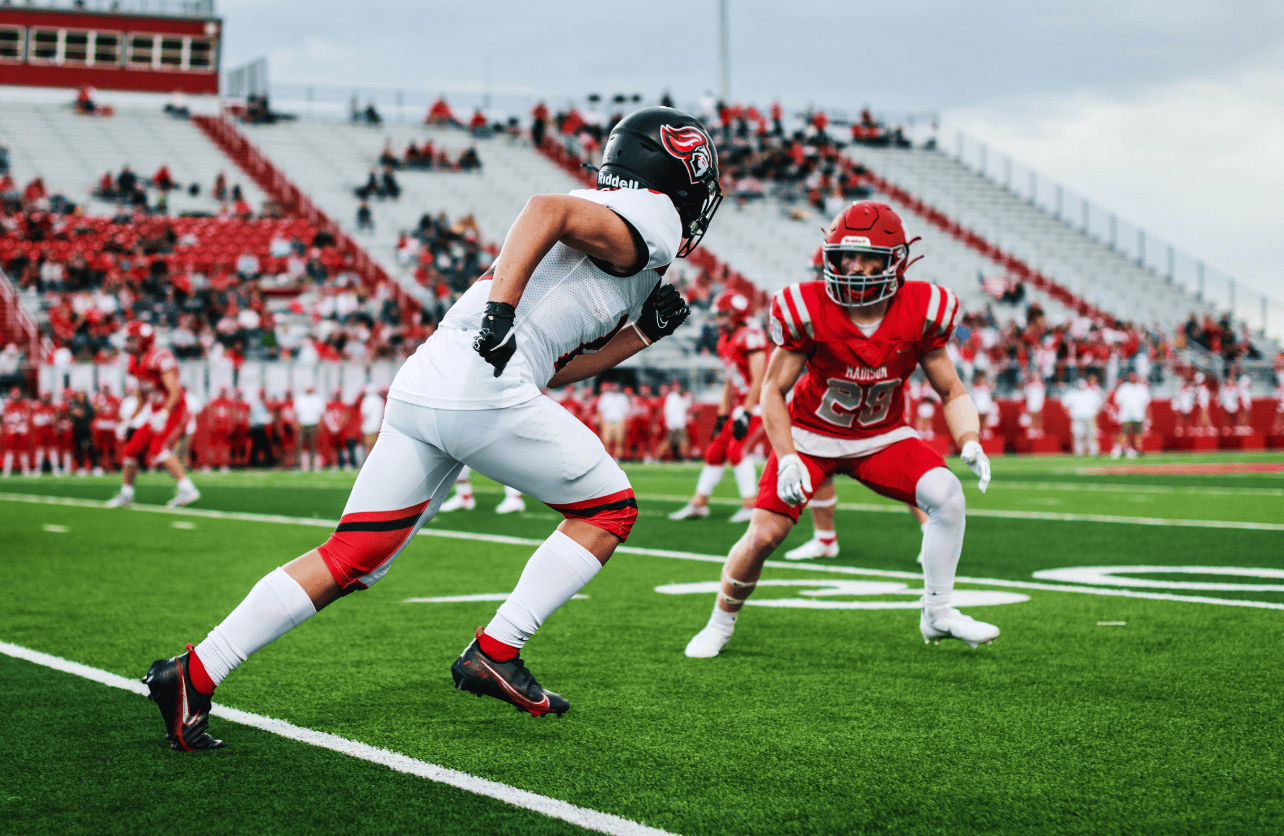Why the RPO is Dominating Modern Football

In recent years, the Run-Pass Option (RPO) has become a cornerstone of offensive strategy in both college and professional football. This innovative approach allows offenses to exploit defensive weaknesses by giving the quarterback the flexibility to choose between a running play and a passing play based on real-time defensive alignments and reactions. The RPO’s rise to prominence is a testament to its effectiveness in creating mismatches and keeping defenses off balance.
Understanding the RPO
At its core, the RPO is a play that combines elements of both running and passing. Unlike traditional plays where the decision to run or pass is made before the snap, the RPO empowers the quarterback to make this decision during the play, depending on the movements of specific defensive players. This post-snap read typically focuses on a single defender, often a linebacker or safety. If this defender commits to stopping the run, the quarterback can opt to pass the ball to an open receiver. Conversely, if the defender drops back into coverage, the quarterback can hand the ball off to the running back.
This strategy effectively forces the defense into a lose-lose situation, as their actions will dictate the offense’s response, often leading to positive yardage for the offense.
The Evolution and Adoption of the RPO
The RPO’s roots can be traced back to option offenses that emphasized reading defensive players to make real-time decisions. However, the modern RPO gained significant traction after a 2009 NCAA rule change that allowed offensive linemen to block up to three yards downfield on passing plays. This adjustment provided offenses with greater flexibility to disguise their intentions, making it more challenging for defenses to anticipate plays.
Initially, the RPO was predominantly utilized in college football, where the more lenient rules regarding linemen downfield facilitated its implementation. Coaches like Rich Rodriguez and Urban Meyer were among the pioneers who integrated RPO concepts into their playbooks, leveraging the scheme’s ability to stress defenses horizontally and vertically.
The success of the RPO at the collegiate level did not go unnoticed by the NFL. Despite stricter rules in the professional league—where linemen are only allowed to block one yard downfield on passing plays—teams began incorporating RPO elements into their offenses. By 2018, franchises such as the Chicago Bears, Carolina Panthers, and Cincinnati Bengals had adopted RPO strategies, recognizing their potential to enhance offensive efficiency.
Why the RPO is So Effective
Several factors contribute to the RPO’s dominance in modern football:
- Defensive Conflict: The RPO places defenders in a bind, forcing them to choose between committing to the run or the pass. This hesitation can lead to defensive breakdowns and open up opportunities for the offense.
- Versatility: The RPO can be adapted to various offensive schemes and personnel groupings, making it a versatile tool that can be tailored to a team’s strengths.
- Tempo and Misdirection: By combining run and pass options into a single play, the RPO allows offenses to maintain a high tempo and utilize misdirection, keeping defenses on their heels.
- Maximizing Athleticism: The RPO capitalizes on the athleticism of dual-threat quarterbacks, enabling them to make plays with both their arm and legs, thereby increasing the offense’s unpredictability.
Challenges and Criticisms
Despite its advantages, the RPO is not without its challenges and criticisms. One primary concern is the potential for offensive linemen to be penalized for being illegally downfield if a pass is thrown after they have advanced too far. This risk necessitates quick decision-making by the quarterback to ensure compliance with the rules.
Additionally, some traditionalists argue that the RPO blurs the lines between run and pass plays, potentially complicating officiating and challenging the defense’s ability to play aggressively.
The Future of the RPO in Football
The RPO’s influence on modern football is undeniable. As defenses continue to evolve to counteract its effectiveness, offensive coordinators are developing more complex RPO variations, incorporating multiple reads and options to stay ahead of defensive adjustments.
Moreover, the proliferation of RPO concepts has influenced player development, with quarterbacks now being trained from a young age to make rapid post-snap decisions, and offensive linemen honing their skills in executing run blocks that can seamlessly transition into pass protection.
In conclusion, the RPO has revolutionized offensive football by providing a dynamic and adaptable strategy that leverages real-time decision-making to exploit defensive vulnerabilities. Its continued evolution and integration into playbooks at all levels of the game underscore its significance as one of the most impactful innovations in modern football.
Trustworthy Insights for You
With years of combined expertise in online publishing, OvertimeReviews embodies the lessons learned from SEO strategies to paid advertising experiences. We've navigated the highs and lows, and our goal remains clear: to equip readers with comprehensive information they can trust.
